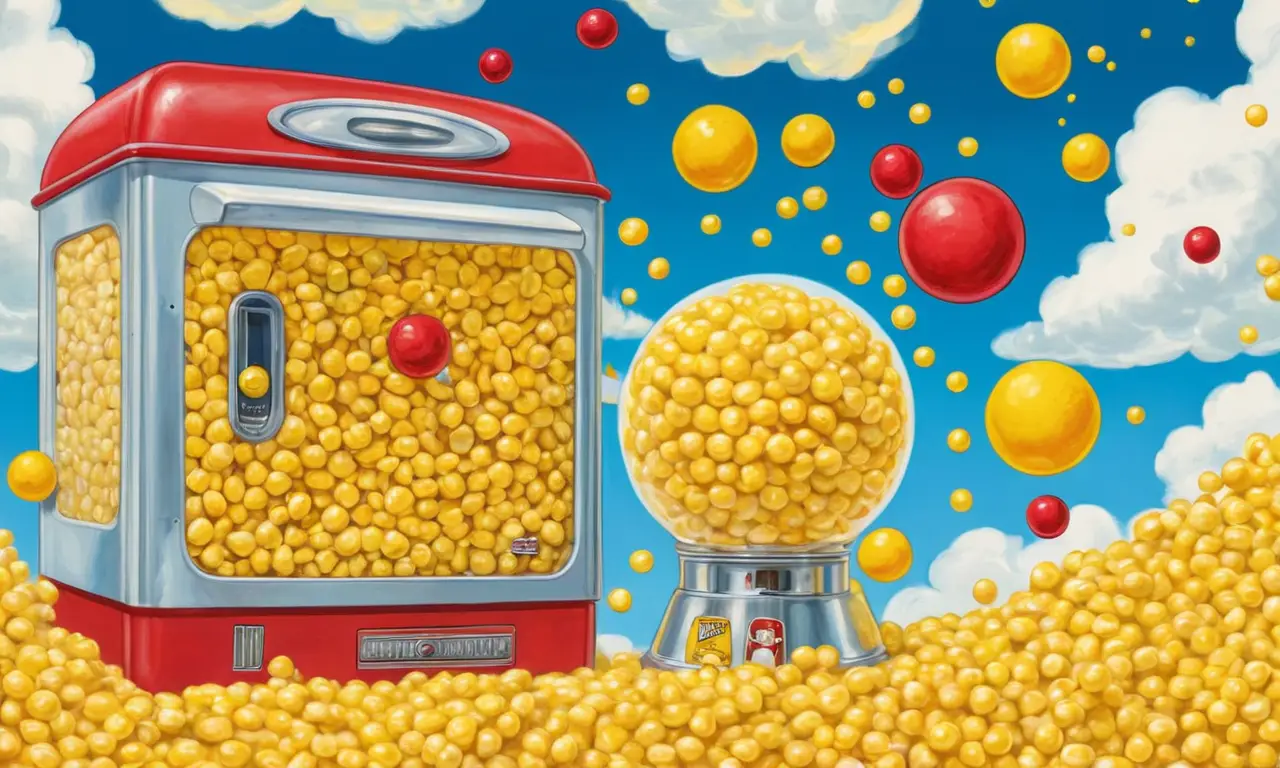
Have you ever noticed that the smell of certain Starburst candies resembles freshly popped popcorn? This intriguing connection isn’t just a coincidence. It stems from a common ingredient found in both treats – diacetyl. This article delves into the science behind this surprising similarity, exploring how diacetyl contributes to the “buttery” aroma and taste experienced in both Starburst and popcorn.
This exploration will cover the role of diacetyl in food products, its impact on creating buttery flavors and scents, and how sensory associations link these seemingly disparate treats. We’ll also examine the differences between Starburst candy and popcorn while highlighting the fascinating connection they share through diacetyl.
Starburst Popcorn Flavor
The distinctive aroma of certain Starburst candies, particularly those with a “buttery” or “caramel” flavor profile, often evokes comparisons to freshly popped popcorn. This similarity in scent arises from the presence of diacetyl, a chemical compound commonly used in both food products. Diacetyl is responsible for imparting that characteristic “buttery” flavor and aroma found in both popcorn and specific Starburst varieties.
The use of diacetyl in Starburst candies aims to enhance their taste profile and create a more appealing sensory experience for consumers. The buttery notes complement the sweetness of the candy, adding a layer of complexity and richness. This deliberate addition of diacetyl has successfully created a flavor association between Starburst and popcorn for many individuals.
Diacetyl in Food Products

Diacetyl is a naturally occurring compound found in fermented dairy products like butter and cream. It’s also produced synthetically and widely used as a flavoring agent in various food products, including:
- Popcorn: Diacetyl is commonly added to microwave popcorn kernels to create the desired buttery aroma and taste.
- Confectionery: As mentioned earlier, diacetyl is used in certain Starburst varieties to enhance their “buttery” or “caramel” flavor profiles.
- Dairy Products: While naturally present in butter and cream, diacetyl can also be added to other dairy products like ice cream and yogurt to intensify their buttery flavor.
The widespread use of diacetyl in food products stems from its ability to effectively impart a distinct “buttery” aroma and taste that consumers find appealing.
Buttery Aroma and Taste
Diacetyl’s unique chemical structure allows it to interact with olfactory receptors in the nose, triggering the perception of a buttery aroma. When consumed, diacetyl also interacts with taste receptors on the tongue, contributing to the sensation of “buttery” flavor.
This ability to create both olfactory and gustatory sensations of butteriness makes diacetyl a highly effective flavoring agent. It’s responsible for the characteristic aroma and taste that consumers associate with popcorn, certain Starburst candies, and other buttery-flavored products.
Sensory Associations

Our brains are wired to make connections between sensory experiences. When we encounter a familiar scent or taste, it often triggers memories and associations with past experiences.
The shared presence of diacetyl in both Starburst candy and popcorn creates a sensory association for many individuals. The “buttery” aroma and taste evoke memories of freshly popped popcorn, linking the two seemingly unrelated treats in their minds. This phenomenon highlights the powerful influence of sensory cues on our perception and memory.
Starburst Candy vs. Popcorn
Despite the shared connection through diacetyl, Starburst candy and popcorn are distinct products with different ingredients, textures, and purposes.
Starburst candies are primarily composed of sugar, corn syrup, gelatin, and artificial flavors and colors. They are designed to be chewy and sweet treats enjoyed as a snack or confectionery. Popcorn, on the other hand, is a whole-grain snack made from kernels that expand when heated. It’s typically consumed plain or with toppings like butter, salt, or caramel.
While their ingredients and intended uses differ, the shared presence of diacetyl creates an intriguing sensory link between these two popular treats.
Conclusion
The connection between Starburst candy and popcorn lies in the common use of diacetyl, a chemical compound that imparts a distinct “buttery” aroma and taste. This shared ingredient triggers sensory associations for many individuals, linking the seemingly disparate treats through their olfactory and gustatory experiences. While Starburst candies and popcorn are distinct products with different ingredients and purposes, the presence of diacetyl highlights the fascinating ways in which sensory cues can shape our perceptions and create unexpected connections between everyday items.
